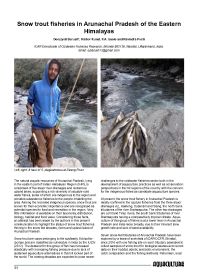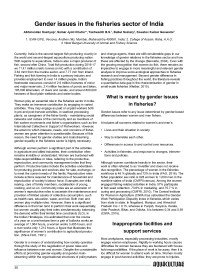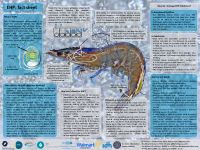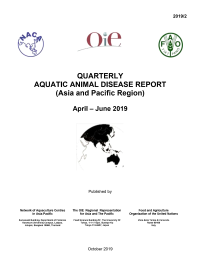Snow trout are known for their economic importance and are recognised as potential species for food and recreation. However, very little information is available on their taxonomy, distribution, biology, habitat and food value. The demand for this group of fish has increased drastically with increasing fishing pressure due to the lack of sustained aquaculture alternatives in this hill locked part of the world. This article describes the status of snow trout fisheries in the snow fed streams, rivers and upland lakes of Arunachal Pradesh, India.
Women play an essential role in the fisheries sector of India. They make an immense contribution by engaging in varied activities. They may engage as paid or unpaid workers both in pre and post-harvest activities, in seafood processing plants, as caregivers of the fisher family - maintaining social networks and culture of the community and as members of fish worker movements and fisher’s organisations. However, their contribution often remains invisible or understated. This article examines the contribution of women to the fisheries sector in India, identifies constraints and suggests ways to address these issues.
The ASEAN Regional Technical Consultation on Aquatic Emergency Preparedness and Response Systems for Effective Management of Transboundary Disease Outbreaks in Southeast Asia was held from 20-22 August 2018 in Bangkok, Thailand. The consultation discussed the status of and/or need for aquatic emergency preparedness and response systems for effective management of transboundary disease outbreaks in Southeast Asia. Issues were addressed through country reports, technical presentations and a workshop.
EHP or Enterocytozoon hepatopenaei is a fungal microsporidian parasite that infects the hepatopancreas (hp) of tiger shrimp (Penaeus monodon) and whiteleg shrimp (P. vannamei) in Thailand and results in slow growth and, in chronic infections, mortalities. EHP is also known from Brunei, China, India, Indonesia, Malaysia, Philippines, Venezuela and Vietnam. This fact sheet provides information on the EHP life cycle, signs of infection, diagnosis and management in both hatcheries and growout, as well technical contacts for further information.




